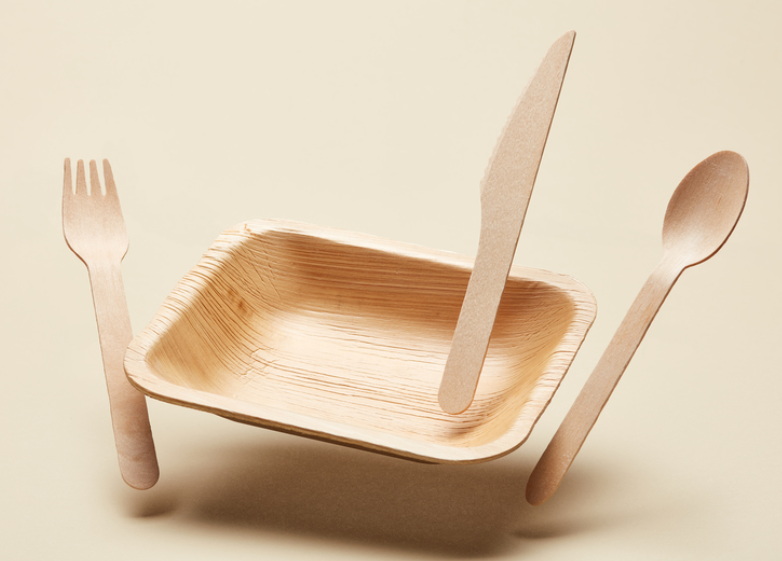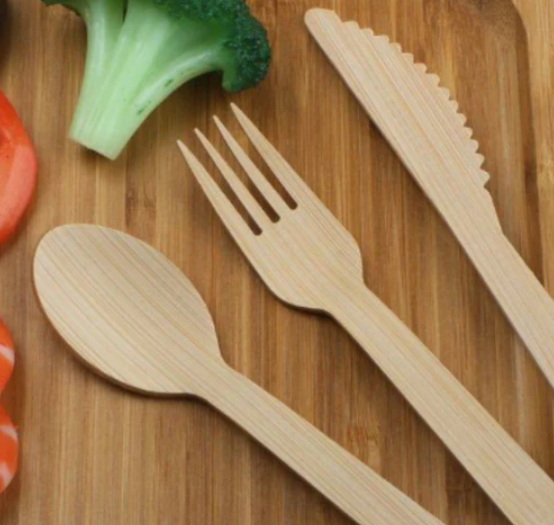
Content Menu
● Introduction to Bamboo
>> Environmental Benefits of Bamboo
● Advantages of Bamboo Cutlery
>> Durability and Versatility
>> Health and Safety
>> Aesthetic Appeal
● Manufacturing Process of Bamboo Cutlery
● Comparison with Other Materials
>> Bamboo vs. Plastic
>> Bamboo vs. Metal
● Economic Benefits of Bamboo Cutlery
● Challenges and Limitations
● Conclusion
● FAQs
>> 1. What Makes Bamboo Cutlery Sustainable?
>> 2. How Does Bamboo Cutlery Compare to Plastic?
>> 3. Is Bamboo Cutlery Durable?
>> 4. Can Bamboo Cutlery Be Used for Hot Foods?
>> 5. How Should Bamboo Cutlery Be Stored?
● Citations:
In recent years, the world has witnessed a significant shift towards environmentally friendly disposable cutlery as concerns about plastic waste and its impact on the environment continue to grow. Among the various alternatives to traditional plastic cutlery, bamboo has emerged as a highly sustainable option. This article explores the reasons behind bamboo's sustainability and why it is becoming increasingly popular for making environmentally friendly disposable cutlery.

Introduction to Bamboo
Bamboo is a fast-growing, renewable resource that requires minimal water and no pesticides or fertilizers to grow. It can be harvested in as little as three to five years, making it an ideal material for sustainable products like cutlery[1][3]. Bamboo's rapid growth rate and ability to regrow from its root system without replanting ensure a continuous supply of raw material, reducing the need for deforestation and making it an environmentally responsible choice[10].
Environmental Benefits of Bamboo
1. Biodegradability: Bamboo is fully biodegradable, meaning it decomposes naturally in the environment without leaving harmful toxins behind. This contrasts sharply with plastic, which can take hundreds of years to decompose[1][2].
2. Carbon Footprint: The production of bamboo cutlery emits significantly less pollution and CO2 compared to plastic, contributing to a lower carbon footprint[7].
3. Renewable Resource: Bamboo is a renewable resource that absorbs more carbon dioxide and releases more oxygen than most plants, aiding in carbon sequestration and combating climate change[6].
Advantages of Bamboo Cutlery
Durability and Versatility
Bamboo cutlery is surprisingly durable and can withstand both hot and cold foods without warping or melting. It is also lightweight, making it ideal for travel and outdoor activities[8][14].
Health and Safety
Bamboo cutlery is non-toxic and does not release harmful chemicals when exposed to heat, unlike some plastic utensils. It also has natural antibacterial properties, which prevent the growth of bacteria and odors[9][10].
Aesthetic Appeal
Bamboo cutlery offers a natural and stylish look, enhancing the dining experience with its rustic charm. It is often used in high-end restaurants to create a sophisticated atmosphere[9].
Manufacturing Process of Bamboo Cutlery
The manufacturing process of bamboo cutlery is eco-friendly and involves minimal environmental impact. Here's a brief overview:
1. Harvesting: Bamboo is harvested from sustainably managed forests, ensuring it remains a renewable resource[7].
2. Processing: The bamboo is cut, shaped, and polished into utensil forms. This process requires less energy and water compared to plastic production[2].
3. Finishing: The bamboo utensils undergo quality control and are packaged in eco-friendly materials[7].

Comparison with Other Materials
Bamboo vs. Plastic
- Biodegradability: Bamboo is biodegradable, while plastic takes centuries to decompose.
- Carbon Footprint: Bamboo production has a lower carbon footprint.
- Renewable Resource: Bamboo is renewable, unlike the non-renewable resources used for plastic[1][2].
Bamboo vs. Metal
- Weight: Bamboo is significantly lighter than metal.
- Heat Resistance: Bamboo does not conduct heat, making it safer than metal for handling hot foods[8].
- Environmental Impact: Bamboo requires less energy for production and is biodegradable[6].
Economic Benefits of Bamboo Cutlery
The use of bamboo cutlery not only benefits the environment but also has economic advantages. It supports local economies where bamboo is produced and reduces the costs associated with managing plastic waste[10].
Challenges and Limitations
While bamboo cutlery offers many benefits, there are some challenges to consider:
- Cost: Disposable bamboo cutlery can be more expensive than plastic alternatives[9].
- Durability: While durable, bamboo cutlery may break if dropped or used roughly[8].
- Disposal: Proper disposal is necessary to ensure bamboo cutlery decomposes effectively[9].
Conclusion
Bamboo is a highly sustainable material for making environmentally friendly disposable cutlery due to its biodegradability, rapid growth rate, and low carbon footprint. As the world continues to seek alternatives to plastic, bamboo cutlery stands out as a practical and eco-friendly solution. By choosing bamboo, individuals and businesses can contribute to reducing plastic waste and promoting a greener future.

FAQs
1. What Makes Bamboo Cutlery Sustainable?
Bamboo cutlery is sustainable because it is made from a renewable resource that grows quickly without needing pesticides or fertilizers. It is biodegradable, reducing landfill waste and environmental pollution[3][10].
2. How Does Bamboo Cutlery Compare to Plastic?
Bamboo cutlery is biodegradable and has a lower carbon footprint compared to plastic. It does not release harmful toxins during decomposition, unlike plastic, which can take centuries to break down[1][2].
3. Is Bamboo Cutlery Durable?
Yes, bamboo cutlery is durable and can withstand both hot and cold foods. However, it may break if dropped or used roughly, unlike metal cutlery[8][9].
4. Can Bamboo Cutlery Be Used for Hot Foods?
Yes, bamboo cutlery is heat-resistant and can be used for hot foods without warping or melting[14].
5. How Should Bamboo Cutlery Be Stored?
Bamboo cutlery should be stored in a cool, dry place away from direct sunlight to maintain its integrity and prevent warping[14].
Citations:
[1] https://www.anchenggy.com/blog/why-disposable-bamboo-and-wooden-cutlery-are-better-eco-friendly-choices-made-simple.html
[2] https://holycitystrawcompany.com/blogs/insights/the-eco-friendly-journey-of-bamboo-cutlery
[3] https://wonbonwood.com/wooden-vs-bamboo-cutlery/
[4] https://beyondplastic.com.hk/products/organic-disposable-bamboo-culterly
[5] https://www.youtube.com/watch?v=_G75fd4YnCc
[6] https://ecoessense.com/bamboo-cutlery-advantages/
[7] https://www.anzhucraft.com/the-ultimate-guide-to-bamboo-cutlery/
[8] https://www.yanxiyan.com/bamboo-utensils-pros-cons/
[9] https://www.linkedin.com/pulse/bamboo-cutlery-pros-cons-all-you-need-know-2022-update-leon-chan
[10] https://eventableware.com/bamboo-cutlery-the-sustainable-choice/
[11] https://meserii.com/blogs/bamboo/cutlery-sustainable
[12] https://www.ecobifrost.com/advantages-of-eco-friendly-disposable-bamboo-cutlery-sets/
[13] https://www.ecoconcepts.com.hk/bamboo-faq
[14] https://www.alibaba.com/showroom/disposable-bamboo-cutlery.html
[15] https://www.ecobifrost.com/why-is-bamboo-an-eco-friendly-material-for-disposable-cutlery/
[16] https://www.cuboh.com/blog/why-bamboo-cutlery-better-ghost-kitchen
[17] https://westshorecutlery.com/disposable-wooden-cutlery

















